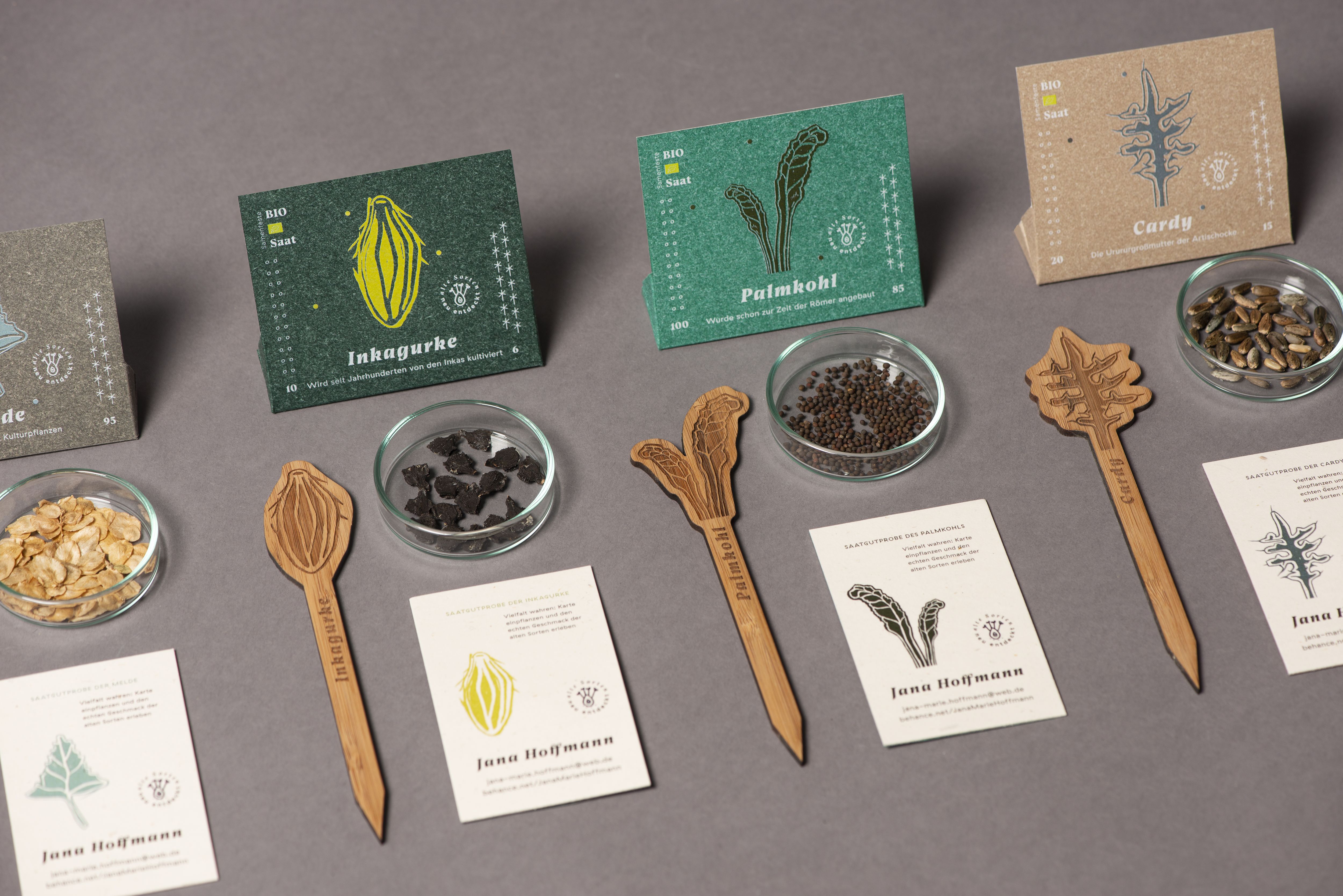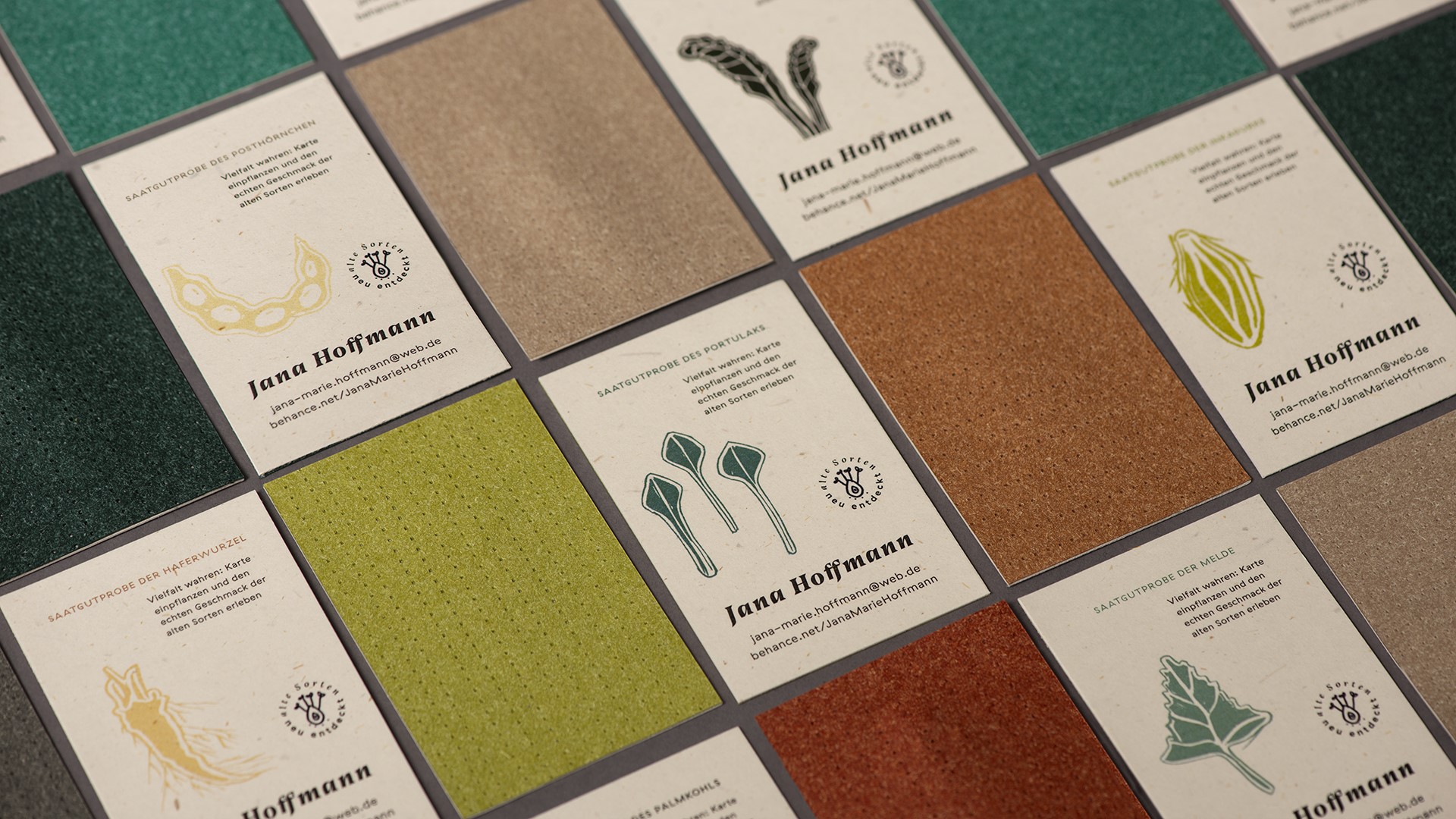»The jury was impressed by Jana Hoffmann's “Old Varieties” project in terms of both design and content. In shops or at trade fairs, the stand-up display informs customers about old varieties of vegetables and encourages them to grow their own. It shows the diversity of plant-based nutrition, which can make an important contribution to climate protection, and prompts reflection on one’s own contribution to preventing the loss of biological diversity.«
Dr. Bettina Rechenberg

Three questions for Jana Hoffmann
How did the idea for Old Varieties come about?
The idea for my work came about during a presentation on the topic of “preserve”. Among other things, we were shown a bunker in Spitzbergen that stores a huge number of seeds from all over the world. In my subsequent research, I came across an incredible diversity of varieties that were previously unknown to me, such as the artichoke thistle, crosnes or saltbush. In the course of industrialisation, these true-to-seed varieties (meaning that the seed will yield the same type of plant as the original plant) were largely replaced by hybrid varieties.
What was your personal high point in the development process of Old Varieties? Was there a low point?
I actually experienced a personal high point at the very end of my project. After ten days of up to 14 hours work every day in the book bindery, all of the individual parts came together to form a coherent whole, and I realised that everything was working as I had envisaged. That was an extraordinary feeling. There were some low points, for example the processing of the paperboard honeycomb panel turned out to be far more complicated than expected, so I had to get creative within the limitations of the university workshop.
Where do you see your project in five years?
I would be very happy if my work could contribute to preserving crop diversity, which is so vital for a functioning ecosystem. I want to win over as many people as possible with the original flavours of these old varieties that can’t be offered by regular supermarket vegetables. I would like to see a 2025 in which a diversity of true-to-seed vegetables have found their way into the supermarkets, so that we can once again decide for ourselves what ends up on our plates.

